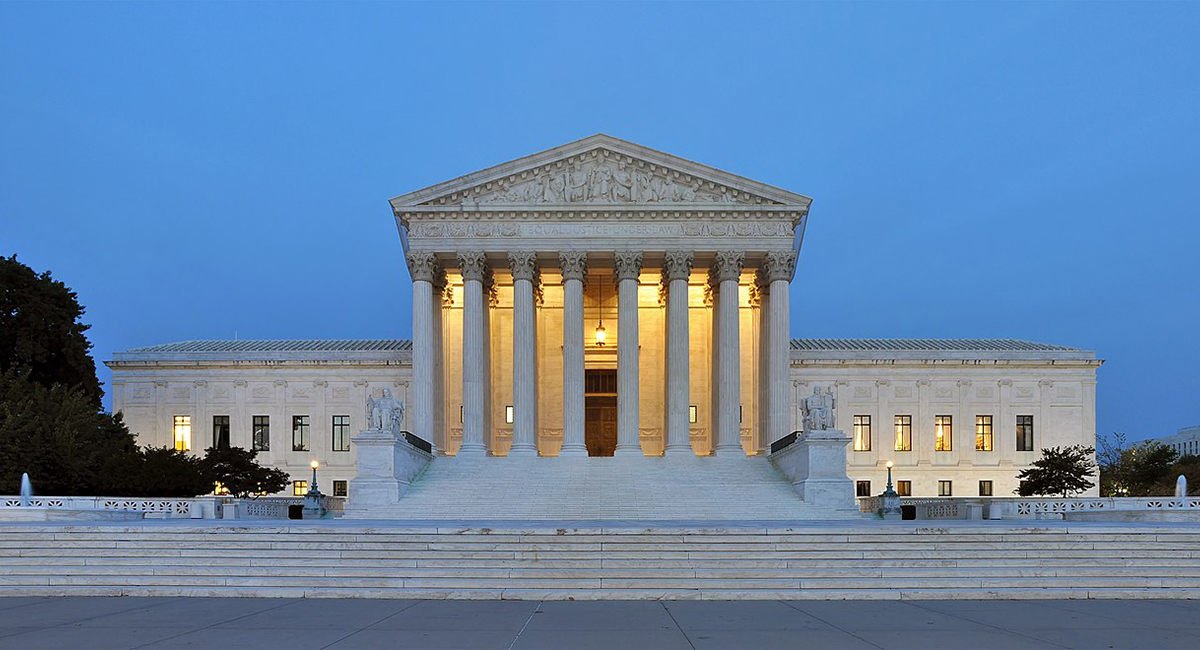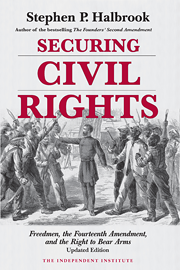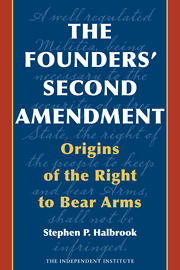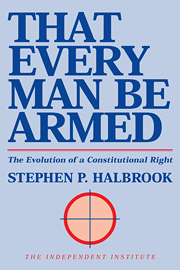On May 1, Justice Amy Coney Barrett directed the State of Illinois and the City of Naperville to respond to the emergency application for injunction pending appellate review filed by the National Association for Gun Rights (NAGR). As I explained in “An Opening Judicial Salvo in Defense of Illinois’ New Rifle Ban,” the U.S. district court (N.D. Ill.) denied a motion for preliminary injunction against the State’s ban on semiautomatic rifles and standard-capacity magazines, greatly departing from Supreme Court precedent on the Second Amendment.
While that denial was being appealed to the 7th Circuit, Judge Stephen McGlynn (S.D. Ill.) found that plaintiffs in another challenge were likely to succeed on the merits that the law violates the Second Amendment, and he issued a preliminary injunction against enforcement. See my post. The 7th Circuit immediately granted the State’s motion for a stay against the injunction in a one-sentence order without giving the plaintiffs an opportunity to respond.
So now the challengers have filed amicus briefs supporting NAGR in the Supreme Court, and we await a decision there.
While granting the emergency application in an interlocutory appeal of this type would be unusual, there are compelling reasons to do so here, as perhaps explained best in the amicus brief filed by Paul Clement and Erin Murphy on behalf of the National Shooting Sports Foundation (NSSF). As they note, there were only six states with bans last year when New York State Rifle & Pistol Ass’n v. Bruen was decided, and now there are ten. “Instead of treating Bruen as an occasion to reconsider existing restrictions on constitutional rights of law-abiding citizens, they have enacted new ‘assault weapon’ and/or ‘large-capacity magazine’ bans, with more still on the way.” Quoting phrases from Bruen, they argue:
Rifles, pistols, and shotguns plainly “constitute bearable arms”—i.e., “instruments that facilitate armed self-defense,” ...—no matter what kind of grip, stock, ammunition feeding device, or other features they may have. The right to keep and bear them is thus “presumptively protect[ed]” by the Constitution. In breezily concluding that the firearms Illinois has banned are not even “Arms” covered by the plain text of the Second Amendment, the district court in this case inexplicably ignored the test that Bruen articulated, and instead simply declared that “[t]he text of the Second Amendment is limited to only certain arms.”
This is a very simple, straightforward case. Going back to basics, the Court held in District of Columbia v. Heller (2008) that arms that are “in common use” or that are “typically possessed by law-abiding citizens for lawful purposes” are protected by the Second Amendment and may not be banned. As the record reflects, there are over 24 million rifles of the types that are banned in the hands of American citizens. Even the State’s brief admits that there are millions of gun owners who possess semiautomatic firearms of the sort banned by Illinois.
Moreover, neither Naperville nor Illinois argue or present evidence that the banned firearms and magazines, which obviously help “facilitate armed self-defense” and which are essential components of modern semiautomatic firearms (both handguns and rifles), are not in common use by Americans for lawful purposes. Yet the district court invented a test that they may be banned because they are “unusually dangerous,” perverting the rule that only arms that are both “dangerous and unusual” may be banned.
Turning the clock back to when the Court announced its decision in Heller, D.C. officials defiantly promised from the courthouse steps to do everything in their power to negate the decision, which they carried out by banning whole categories of rifles they called “assault weapons.” It was my honor to challenge the ban in the case that became known as Heller II. It should have been a slam dunk.
In the 2-1 decision in the D.C. Circuit that followed, the majority readily conceded that the banned rifles and magazines were in common use. But that was only the beginning rather than the end of the matter. The legislative history featured antigun lobbyists who live in a fantasy world testifying that the only purpose of the subject guns and magazines was to kill lots of people. Apply means-ends scrutiny under intermediate scrutiny, forget about Heller’s common-use test, and presto—the law is constitutional.
Then-circuit judge Brett Kavanaugh dissented. Semiautomatic rifles with detachable magazines began coming into common use over a century ago. Handguns, including semiautomatic pistols, are widely used in crime and yet are protected by the Second Amendment. Rifles of all kinds are rarely used in crime. The standard should be text, history, and tradition, not tiers of scrutiny.
Then began the great game of judicial leap-frogging. As I traced in my book America’s Rifle, Heller II was cited by the next circuit to uphold a similar ban, then the circuit after that had two precedents to cite, and so on until five circuits upheld bans, mostly under intermediate scrutiny.
Finally, in Bruen, the Court put its foot down against this massive resistance to Heller. As the Court explained: “If the last decade of Second Amendment litigation has taught this Court anything, it is that federal courts tasked with making such difficult empirical judgments regarding firearm regulations under the banner of ‘intermediate scrutiny’ often defer to the determinations of legislatures.” But “it is not deference that the Constitution demands here. The Second Amendment ‘is the very product of an interest balancing by the people’ and it ‘surely elevates above all other interests the right of law-abiding, responsible citizens to use arms’ for self-defense.”
Following Bruen, several lower courts have been getting it right. Others, like the district court here, have retained an air of defiance to the Court’s jurisprudence. That’s why the Court should grant the emergency application for injunction pending appellate review. In outline, its order might recite the following:
First, the Illinois law is unconstitutional under Heller and Bruen, which hold that arms in common use are protected. Should the 7th Circuit uphold the law, that decision would warrant summary reversal.
Second, Plaintiffs should not be deprived of their rights to purchase, possess, and sell constitutionally-protected arms during the years-long process that will be necessary ultimately to resolve this case. The irreparable harm caused by this law is immediate and ongoing.
Third, a preliminary injunction is designed to protect the “status quo ante,” that is, the situation that prevailed before there was a dispute between the parties. The status quo ante is that Illinois residents, like the residents of most states, could lawfully purchase, sell, and possess these arms. It is the recent act by the Illinois legislature that upset the status quo ante that had existed throughout the state’s entire history. That previous state of affairs should continue while this litigation is ongoing.
Fourth, the disregard shown by some legislatures and lower courts to the Heller decision over the course of fourteen years, which is now continuing among some states and courts post-Bruen, is inconsistent with constitutional norms and must be ended instanter. In the words of McDonald v. Chicago (2010), the Second Amendment is not a “second class right, subject to an entirely different body of rules than the other Bill of Rights guarantees....”
Fifth, in Caetano v. Massachusetts (2016), the Court granted a cert petition and unanimously reversed, without briefing on the merits or oral argument, a state supreme court decision in conflict with Heller. Although this case is in a different procedural posture, granting the application would serve a similar beneficial purpose to ensure adherence to the Court’s precedents.
















